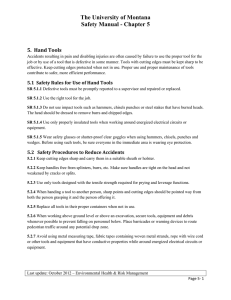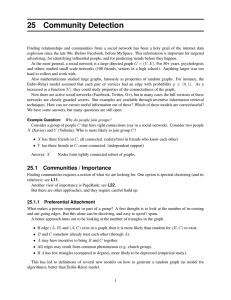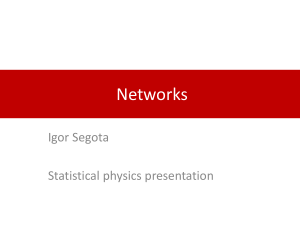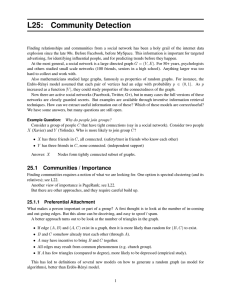Everybody needs somebody Modeling social and grouping behavior
advertisement
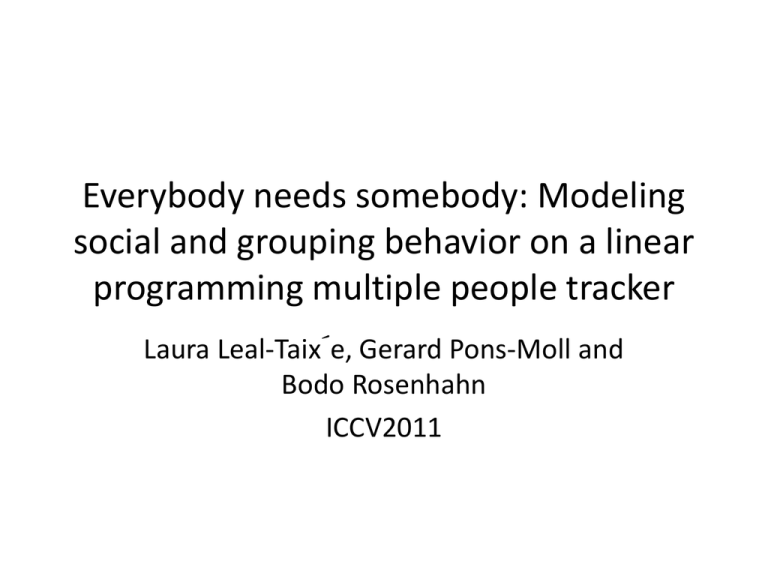
Everybody needs somebody: Modeling social and grouping behavior on a linear programming multiple people tracker Laura Leal-Taix´e, Gerard Pons-Moll and Bodo Rosenhahn ICCV2011 Outline • • • • • Goal Multiple people tracking Modeling social behavior Experimental results Conclusion Goal • People detection is not always correct. • It is important to merge the detection results into right trajectoies. Multiple people tracking • divided in two steps – object detection – data associationform complete trajectories • Build a graph with the nodes pedestrian detections • The matching problem is equivalent to minimum-cost network flow problem Multiple people tracking • • Find the detection. • 4 ,trajectory of k that best explains the • P(oi|T) is the likelihood. Multiple people tracking • trajectory Tk have following dependencies – Constant velocity assumption find oi depends on oi-1,oi-2 – Grouping behavior – Avoidance term Multiple people tracking • Represent by Markov chain: Multiple people tracking Multiple people tracking • Combine (1),(2),(3) Multiple people tracking • Three kinds of edges: – Link edges – Detection edges – Entrance and exit edges Multiple people tracking • Link edges • The edges (ei, bj) connect the end nodes ei with the beginning nodes bj in following frames,with cost Ci,j and flag fi,j • Flag =1 if oi and oj belong to Tk,and ∆f≤Fmax • 111 Multiple people tracking • Detection edges • The edges (bi, ei) connect the beginning node bi and end node ei, with cost Ci and flag fi Modeling social behavior • If a pedestrian doesn’t meet any obstacles, he will naturally follow a straight line. • But the pedestrian will have some social behavior. • Add Social Force Model (SFM)and Group behavior(GR) into the problem. Modeling social behavior • Social forces have three main terms: – The desire to maintain certain speed – The desire to keep away from others – The desire to reach a destination • We focus on first two! Modeling social behavior • Constant velocity assumpion – When a person walk at a speed V at time t – We assume he will have speed V at time t+∆t Modeling social behavior • Avoidance term Modeling social behavior • From the training sequence in [22] , we learn the probabilty of Pg and Pi [22] S. Pellegrini, A. Ess, K. Schindler, and L. van Gool. You’ll never walk alone: modeling social behavior for multi-target tracking. ICCV, 2009. 1, 2, 5, 7 Experimental results Blue=>DIST Greed=>with SDM Red=>SFM+GR Experimental results Experimental results • To show the importance of social behavior and the robustness of our algorithm at low frame rates, we track at 2.5fps (taking one every tenth frame). Experimental results • • • • DA (detection accuracy) TA (tracking accuracy) DP (detection precision) TP (tracking precision) Experimental results [28]use network flow [22]use social behavior [27] use social and grouping Experimental results Conclusion • It is important to have social and group relation on tracking. • This paper outperform on low fps than others and have high accuracies on miss detections,false alarms and noise.





